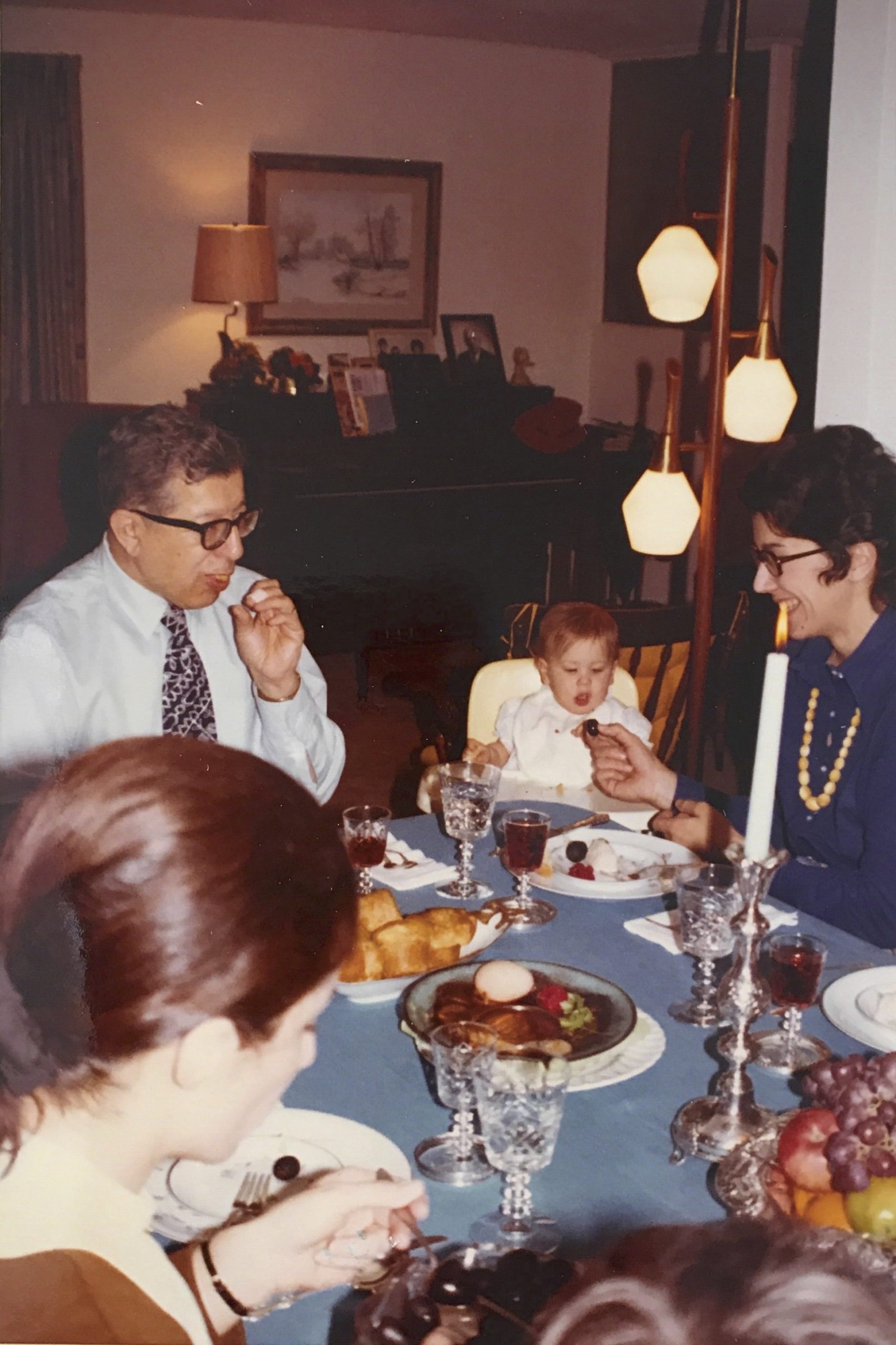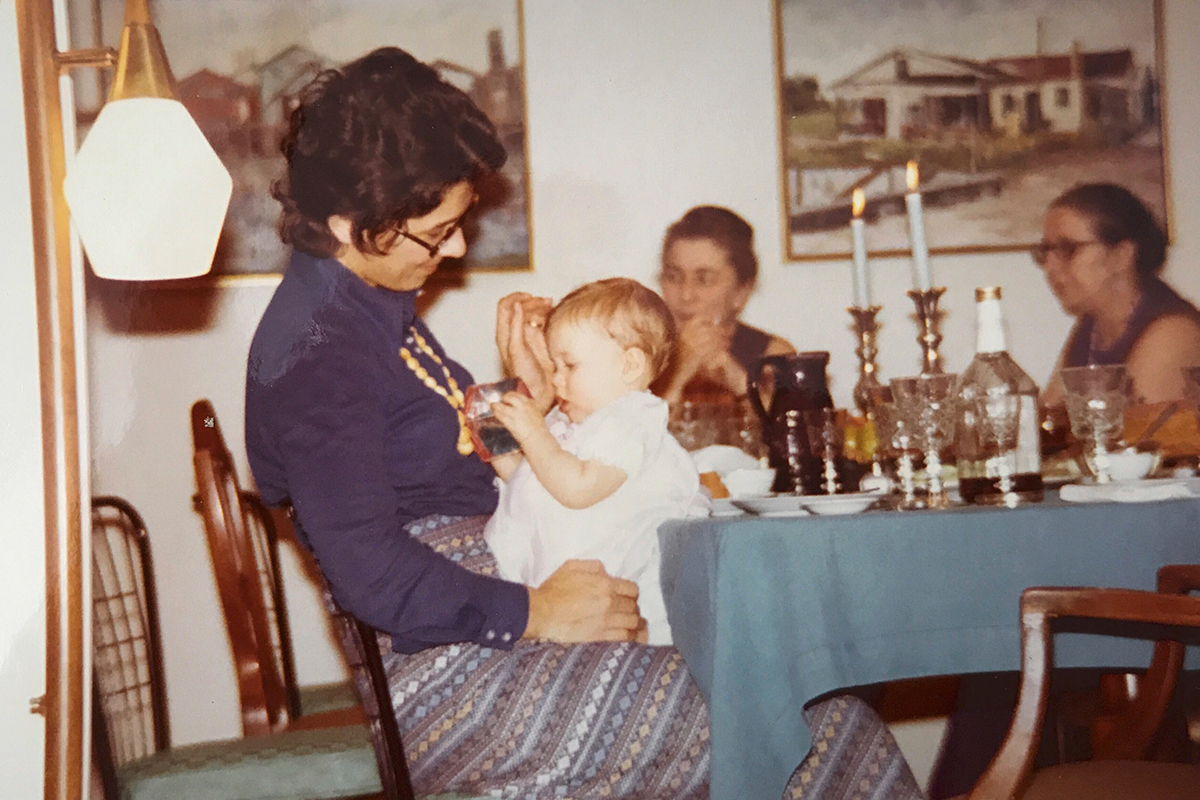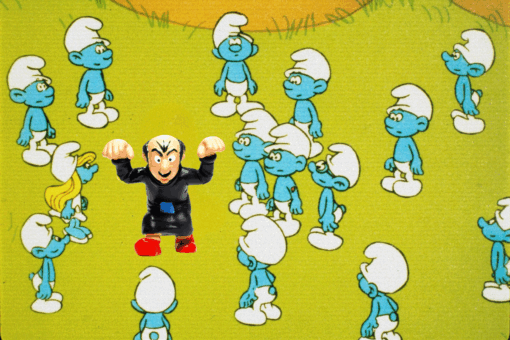My childhood Passover memories are full of joy and order: my Nana peeling apples in one smooth spiral for haroset, the thick yellow phone books on which I sat to reach the table. When I was the youngest, I asked the four questions: “Why is this night different from all other nights?”
“Because,” Papa responded, ”our ancestors were slaves in Egypt, but now we are free.”
As a girl, I imagined my parents repeating the rituals of seder every spring, stretching back to when they were the youngest children at their tables. I knew that my father had survived the Nazi occupation of Belgrade, and I had read accounts of the holiday observed among Jews in concentration camps and in hiding in occupied Europe. But my father never talked about celebrating Passover. Still, I reached for the image of my young father eating matzah and opening the door for Elijah, as our family had done from Belgrade to Israel to Boston.

Seder means “order” in Hebrew. The last moment of order in 1941 Belgrade, Yugoslavia was on April 5, 10 days before Passover began that year. The next morning, the Nazis started bombing civilian targets. Adolf Hitler, angry that the Yugoslavian people had refused to be part of a pact with Germany, started what he called Operation Retribution, focusing his violence on Dorcol, Belgrade’s Jewish neighborhood, which was bombarded for three days. Residents were completely surprised.
At the time, my father was not yet 3 years old, living with his family in Dorcol. His earliest memory is of that Nazi bombing, a flashbulb memory created by the trauma of the moment. Any younger and he surely would not recall running down the street with his mother and older cousin toward the bomb shelter in his grandfather Heinrich’s basement, or how people sat together there, not speaking. “The screeching sound and images of the diving German bombers and the explosions nearby are very vivid in my mind,” he remembers. While he and his parents survived, my great-grandfather did not, killed when the stairs leading out of the shelter collapsed.
But why was my great-grandfather Heinrich running out of the building, instead of staying safe in the shelter? My father talks freely about his childhood in occupied Belgrade: peeking down from his front window at the Nazi soldiers patrolling in pairs and, later, seeing Nazi officers come to ride on his grandmother’s horse farm. But he never shared the answer to this question about his grandfather.
Before they ran to the shelter, my grandmother placed a plate of cookies on the wardrobe. While they were gone, the shaking from the bombs caused the plate to fall. It split neatly in two. When the skies were finally quiet, my father, his mother, and his cousin returned home through their neighborhood’s rubble and destruction. He marveled at the plate: Why had it not shattered in many pieces, like a glass he remembered dropping?
It’s a child’s memory — the profound, the horrible, and the ordinary wrapped together. My father’s memory of this time is often so certain, so cinematic, I almost feel I have a clear view of the Nazi bombing. As a young girl, when my father told me this story, I could imagine him as a child himself, amazed at how gravity had exerted itself. It felt like the little boy he had been was talking to the little girl I was, both of us fascinated by how the plate was now in two. This fragment of the past was a short film clip that my father rewound and replayed so many times that it felt like something I remembered myself.
My father remembers the broken plate, but not his own father — for though his father survived the bombing, he didn’t survive the subsequent months. Sometimes forgetting can be protective.
My father told me, “The Germans started the registrations of the Jewish adult men and used them as laborers to clear the damage. My father would come home for the night and go to work for the Germans in the morning, until one evening, after six months, he did not return home. I recall vividly many events from that early stage of my life, but I do not recall my father.”
My grandfather’s name is Alexander Brill. Through the U.S. Holocaust Museum, I learned that he slaved on a crew that dug sewers. Knowing the specifics of what he did — standing under armed guard shoveling dirt and laying pipe with other Jews who were his neighbors — gives me a mental image impossible to unsee. Other records revealed that before the German invasion, he had been a clerk, doing indoor work that in no way prepared him for the physical labor he did in the streets, in the Serbian summer heat, in a city without a functioning sewer system.
In 1941, the word genocide had not yet been coined. But it hit the Jews of Serbia fast and hard. Within a year, 90% of them would be murdered, mostly at camps few have heard of. In the Serbian story, there are neither gas chambers nor trains. Most men would be imprisoned at Topovske Sume, then murdered by firing squads in retribution for Nazi soldiers killed by Partisans. The standing order was 100 civilians — Jews, but also Roma and Serbs — executed for every Nazi soldier killed, and 50 shot for every Nazi wounded.
After all the Jewish men were murdered, about 7,000 Jewish women and children were held at Sajmiste, a camp at a former fairground across the Sava River from Belgrade. One of the largest Nazi camps in southeast Europe, it stood in full view of the city, a warning to rebellious Serbs. Those at Sajmiste who didn’t die of malnutrition, disease, and the cold over the winter of 1941-42 were killed in a mobile gas van brought from Germany, then known as the “soul stealer.” A precursor to the gas chambers to come, it made 65 trips through the streets of the city.
No one survived Sajmiste. The Nazis proudly declared Serbia the first European territory where they had solved the “Jewish problem.” And yet, few know of the Holocaust in Serbia. In fact, so few Serbian Jews survived to tell the story that even those familiar with the Holocaust are ignorant about this piece of history. In the U.S. Holocaust Museum’s vast bookstore, there is not a single book on Yugoslavia.
For years, I have worked to piece together the little information available and match it to my father’s childhood memories, hoping to make some order of my own. I’ve wanted to understand why my father, his mother, and his younger sister survived when almost all the Jews of Serbia were murdered in that first year of occupation. I wanted to comprehend how, like the Jewish firstborn sons in Egypt, my father was miraculously passed over when so few were spared.
My quest to make sense of it all led to long conversations with my dad. Together we pored over the German and Serbian documents I found, plugging words into Google Translate and struggling to piece together the story. We took two trips to Belgrade, where we met with family and visited places we have ties to, including the Sephardic cemetery, the concentration camp where my grandfather was imprisoned, and the mass grave site where he is most likely buried.
Through this work, my father eventually unearthed a memory, something long-buried that his mother once told him. Rather than go to the safety of his basement shelter, she speculated, my great-grandfather was heading to help her and my father. When the stairs collapsed, he was killed.
If I could travel through time and space, I would fly above the Belgrade of 1941 like a character in a Chagall painting. I imagine looking down from above, watching the scene. I see my great-grandfather. Had the war not come, he might have matured to look something like my dad does now: his hair gray but still full, his cheeks broad, his brown eyes lively. Perhaps the early morning sound of bombing wakes him. He gets an adrenaline surge as he realizes his neighborhood is under surprise attack, moving more quickly than his shape suggests is possible. He laces his shoes and races out to help his namesake, my toddler father.
My grandmother’s guess has become the most important thing I know about my great-grandfather. He has no marked grave, no surviving photographs or letters, and nothing he owned has endured. My father is the only living person who remembers him, and he has only the hazy recollections of a toddler. But now this idea persists: Even in his later years, my great-grandfather ran toward danger for his family.
My family was so comfortable in interwar Belgrade that my grandfather considered himself first a Serbian and then a Jew; a “Serb of Moses’s religion” was the expression. Each year in Dorcol, on the first night of Passover, families like my father’s had been gathering for generations to retell the story of the Israelites’ exodus from slavery. In that vibrant Jewish center, once home to the first Ladino newspaper, Jews taught their children how God helped them escape oppression and danger. But on Passover 1941, Jews were once again unsafe and enslaved. A nightmare worse than Pharoah’s Egypt was starting to play out.
I can imagine the Passover seder that should have occurred if not for the Nazi Occupation: My great-grandfather Heinrich, the family patriarch, is the host. My father, named Heinrich for his grandfather, sits on his father’s lap, his feet dangling far above the floor. Yarmulkes cover their usually bare heads as they look at a haggadah my father is too young to read. At a little more than 2.5 years old, my father, the only grandchild, is coaxed by his father to the task of reciting the Four Questions for the first time — the passing of a baton to the next generation.



